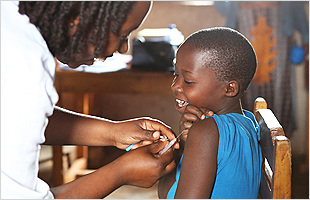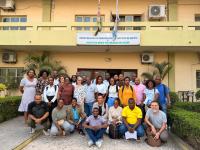World Immunization Week 2015: Close the immunization gap
 World Immunization Week – celebrated in the last week of April (24-30) aims to promote the use of vaccines to protect people of all ages against disease. Immunization is widely recognized as one of the most successful and cost-effective health interventions. It prevents between 2 and 3 million deaths every year and now protects children not only against diseases for which vaccines have been available for many years, such as diphtheria, tetanus, polio and measles, but also against diseases such as pneumonia and rotavirus diarrhoea, 2 of the biggest killers of children under 5. Now adolescents and adults can be protected against life-threatening diseases such as influenza, meningitis, and cancers (cervical and liver), thanks to new and sophisticated vaccines.
World Immunization Week – celebrated in the last week of April (24-30) aims to promote the use of vaccines to protect people of all ages against disease. Immunization is widely recognized as one of the most successful and cost-effective health interventions. It prevents between 2 and 3 million deaths every year and now protects children not only against diseases for which vaccines have been available for many years, such as diphtheria, tetanus, polio and measles, but also against diseases such as pneumonia and rotavirus diarrhoea, 2 of the biggest killers of children under 5. Now adolescents and adults can be protected against life-threatening diseases such as influenza, meningitis, and cancers (cervical and liver), thanks to new and sophisticated vaccines.
But 1 in 5 children is still missing out: in 2013, an estimated 21.8 million infants did not receive lifesaving vaccines. Inadequate supply of vaccines, lack of access to health services, a shortage of accurate information about immunization and insufficient political and financial support all play a part.
Close the immunization gap
World Immunization Week 2015 will signal a renewed global, regional, and national effort to accelerate action to increase awareness and demand for immunization by communities, and improve vaccination delivery services.
This year’s campaign focuses on closing the immunization gap and reaching equity in immunization levels as outlined in the Global Vaccine Action Plan (GVAP). The Plan - endorsed by the 194 Member States of the World Health Assembly in May 2012 ? is a framework to prevent millions of deaths by 2020 through universal access to vaccines for people in all communities.
The GVAP aims to:
- strengthen routine immunization to meet vaccination coverage targets;
- accelerate control of vaccine-preventable diseases with polio eradication as the first milestone;
- introduce new and improved vaccines; and
- spur research and development for the next generation of vaccines and technologies.



